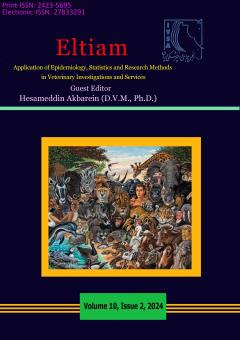Lameness of the hindlimbs originating from the stifle joint is one of the causes of pain, production losses, and culling from herd in cattle. Stifle is a large joint divided into femeropatellar and lateral and medial femorotibial joints. The major soft tissue structures
More
Lameness of the hindlimbs originating from the stifle joint is one of the causes of pain, production losses, and culling from herd in cattle. Stifle is a large joint divided into femeropatellar and lateral and medial femorotibial joints. The major soft tissue structures of the stifle joint are lateral and medial collateral ligaments, cranial and caudal cruciate ligaments, lateral, middle, and medial patellar ligaments, and menisci That contribute to stabilize the stifle joint and its function. Different disorders including fractures, arthritis, and injuries of the menisci, collateral, and cruciate ligaments, and upward fixation of the patella affect stifle joint in cattle. The most important sequela of the stifle injuries is degenerative joint disease. Various degree of joint effusion, pain and lameness are the common clinical signs of stifle injuries in cattle. Lameness of the stifle joint may be difficult to diagnose and treat. Therefore, careful examination of the hindlimb is indicated. Radiography and ultrasonography can be used for diagnosis of stifle joint injuries in cattle. Because of the economic considerations and other limitations, advanced diagnostic techniques such as arthroscopy, computed tomography, and magnetic resonance imaging are uncommonly performed in cattle. Conservative management and surgical techniques are used for treatment of stifle disorders in cattle. Economic value of the cattle, severity of injury, presence of degenerative joint disease, availability of surgical equipment, and expertise of the surgeon should be considered for selecting of treatment options. Prognosis of stifle disorders in cattle is variable and depends on the type of injury, its severity, involved structures and concurrent injuries as well as cattle condition. In this article the most important soft tissues injuries of the stifle joint, clinical signs, diagnosis, treatment and prognosis of these injuries are described.
Manuscript profile


